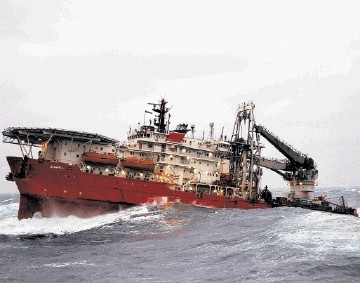
The owners and crew of one of the most successful “Swiss Army Knives” to operate in the North Sea have just celebrated the ship’s 25th birthday.
Seawell, still known to many under her original name Stena Seawell has chalked up a remarkable record and is to all intents and purposes, the offshore industry’s first subsea intervention vessel.
This ship has so far entered 415 live wells, that is, completed wells with Christmas tree installed.
Under original owner Stena Offshore, Seawell carried out its first project (and the first ever live well intervention from a monohull in the world) at BP Magnus in 1987.
The vessel has abandoned 180 wells this far. They include five complete subsea decommissionings – Lasmo Staffa (1995) / Midland & Scottish Emerald (1996) / BP Donan (1998) / Hess Durward-Dauntless (1999) & Talisman Blenhein-Bladon (2000).
Seawell worked on the partial abandonment (reservoirs) at Statoil’s Tommeliten field in 2001. This was the first ever well intervention conducted in Norway from a monohull.
The vessel has put divers down on the vast majority of these wells, not to mention numerous standalone diving projects.
And she has even recovered one Harrier jump jet.
When launched from the Pallion yard in Sunderland by North-east Shipbuilders, Seawell set a new benchmark for multi-function OSVs and even today after 25 years of delivering a decent return for her owners . . . first Stena Offshore and then Well Ops UK (a unit of Houston company Helix Energy), this veteran is apparently still regarded as among the best of her breed.
Stena Offshore conceived the 114m Seawell (and sistership Wellservicer launched in 1988) as multi-purpose ships. They would be fitted with an 18-man saturation diving suite; have a twin remotely operated vehicle capability; be capable of light construction, anchor handling, well intervention; plus be capable of stand-by and rescue duties.
The Seawell’s profile is distinctive because of the twin 65-tonne cranes aft and derrick immediately abaft the chunky superstructure.
Owner Helix Well Ops admitted to Energy that this hugely successful ship will be a hard act to follow in terms of what the company replaces it with . . . possibly a monohull, but a semi-submersible is not being ruled out. A work-group has been put together to evaluate the options with a view to having a successor built in a couple of years or so.
Meanwhile, long-serving Oliver Willis (business delivery manager) and Steven Nairn (regional VP) at Well Ops UK say the vessel remains highly regarded and popular with crew and contractors. And that if the ship is to be remembered for anything, then it is as the North Sea’s first and still pre-eminent subsea light well intervention vessel.